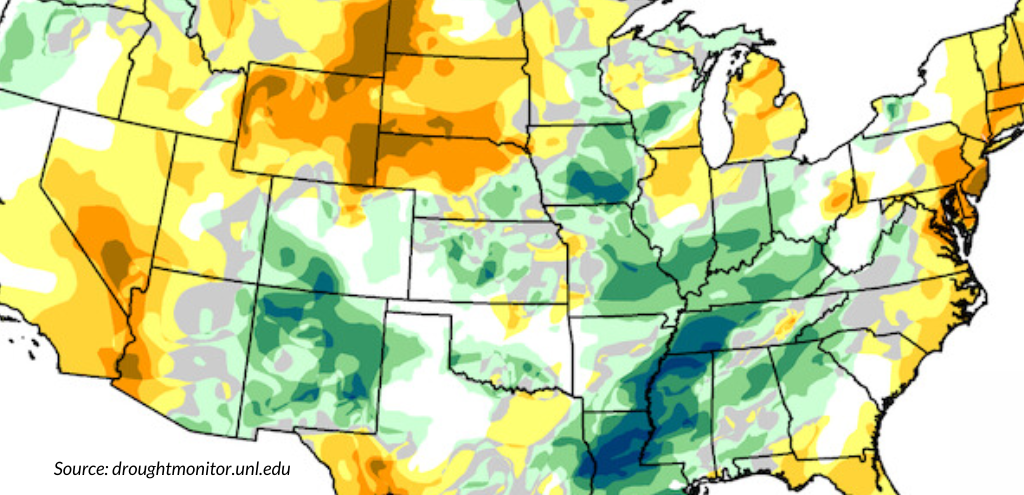THE LEAFLET

2024 Recap: Temps & Drought
Punxsutawney Phil may have predicted six more weeks of winter, but here in the Mid-Atlantic, we’re facing a different challenge—a winter drought. While it might seem odd to worry about dry conditions in the colder months, a lack of moisture now combined with a dry spring could put our trees at risk. Trees rely on consistent hydration throughout the year, and extended dry spells can stress even the hardiest species.
As we enter 2025, the Mid-Atlantic continues to experience concerning weather patterns that highlight the critical need to care for our urban trees. According to the National Oceanic and Atmospheric Administration (NOAA), 2024 was marked by record-breaking drought and temperature extremes. With a warm, dry pattern expected to persist into the new year, supporting our trees through proper care is more important than ever—especially watering.
Across the nation, 2024 saw unpredictable swings in precipitation, but one trend remained consistent: worsening drought in key regions. The Northeast, Midwest, and parts of the Mid-Atlantic—including Ohio and West Virginia—experienced some of their worst drought conditions on record. October was particularly extreme, ranking as the second driest and second warmest October in 130 years, with widespread drought conditions covering nearly half the country.
While some areas saw temporary improvements, long-term trends indicate persistent drought risk, particularly in the Mid-Atlantic. As NOAA’s outlook predicts a dry and warm start to 2025 for our region, tree care remains a top priority.
Drought takes a toll on trees, especially in urban environments where soil compaction, heat stress, and limited root space make them even more vulnerable. Prolonged dry conditions weaken trees, making them more susceptible to pests, diseases, and dieback. In turn, this affects our communities—trees provide essential shade, filter air pollution, and manage stormwater, all of which are crucial in a changing climate.
With rapid onset drought (sometimes called “flash drought”) becoming more frequent, trees can experience sudden stress that may not be immediately visible. Newly planted trees are especially at risk, as their root systems are still being established. The solution? Consistent care—most notably, watering.
Casey Trees encourages residents to actively support tree health throughout the year. Here’s what you can do:
- Water young trees regularly. When temperatures consistently stay above 40 degrees, trees may benefit from deep watering once a week—especially during dry periods.
- Mulch to retain moisture. A 2–3 inch layer of mulch helps prevent water loss and protects roots.
- Stay informed. Keep an eye on drought forecasts and follow Casey Trees for updates on tree care best practices.
The past year’s extreme conditions serve as a reminder that climate challenges aren’t going away—but with proper care, our urban canopy can remain resilient. Join us in ensuring our trees thrive in 2025 and beyond!